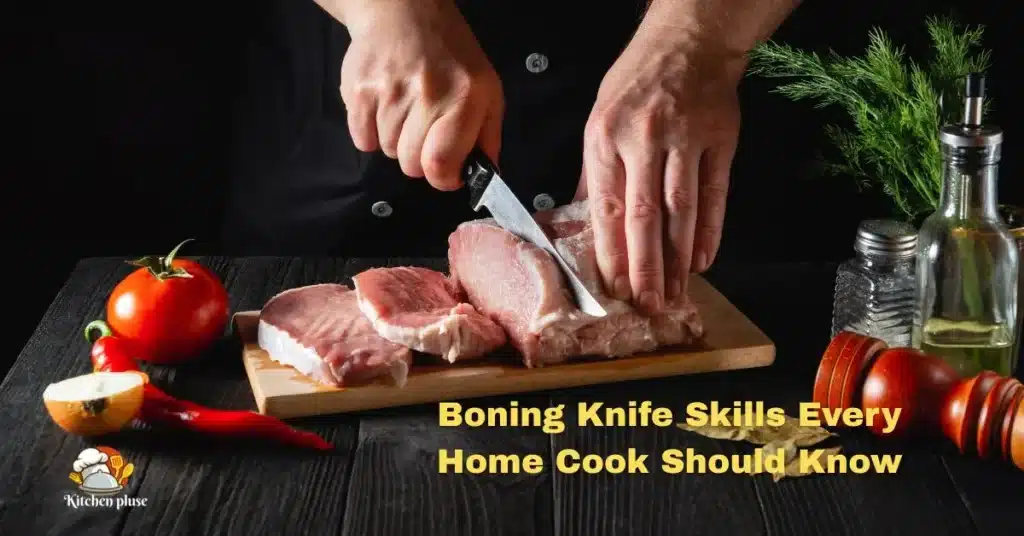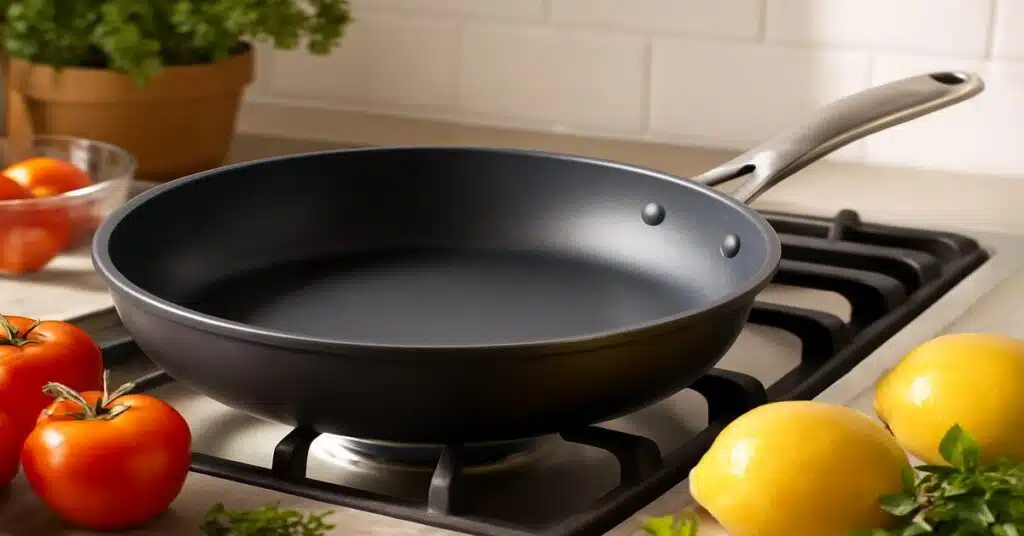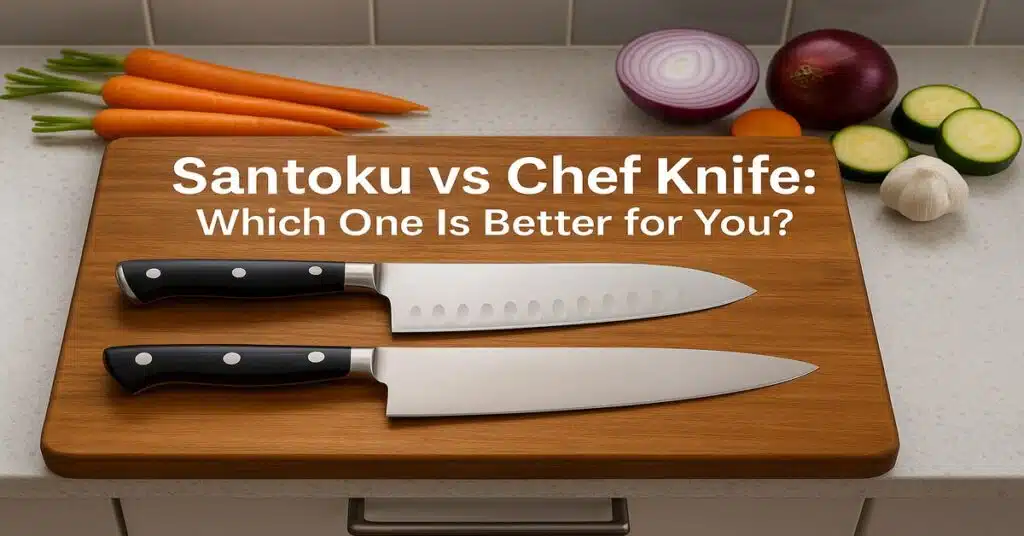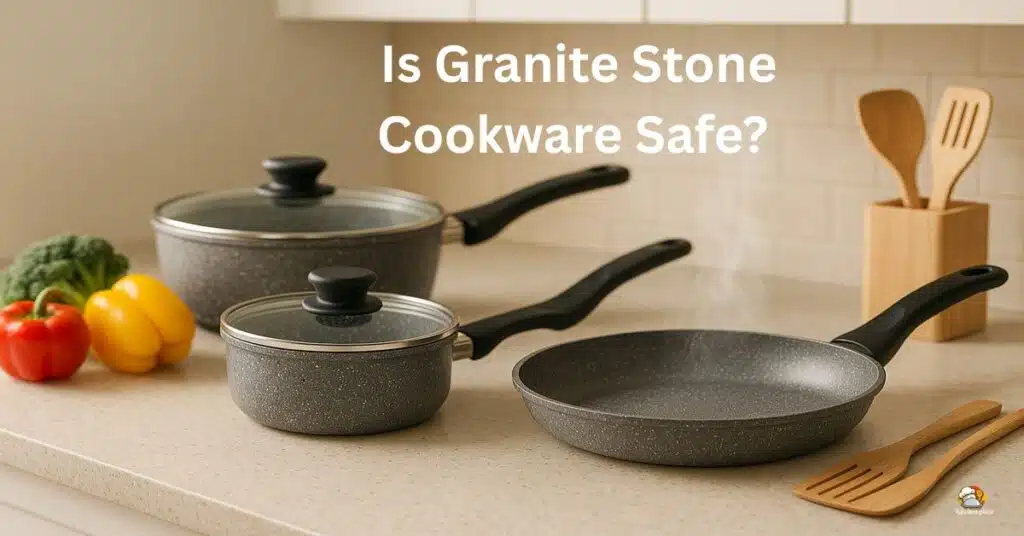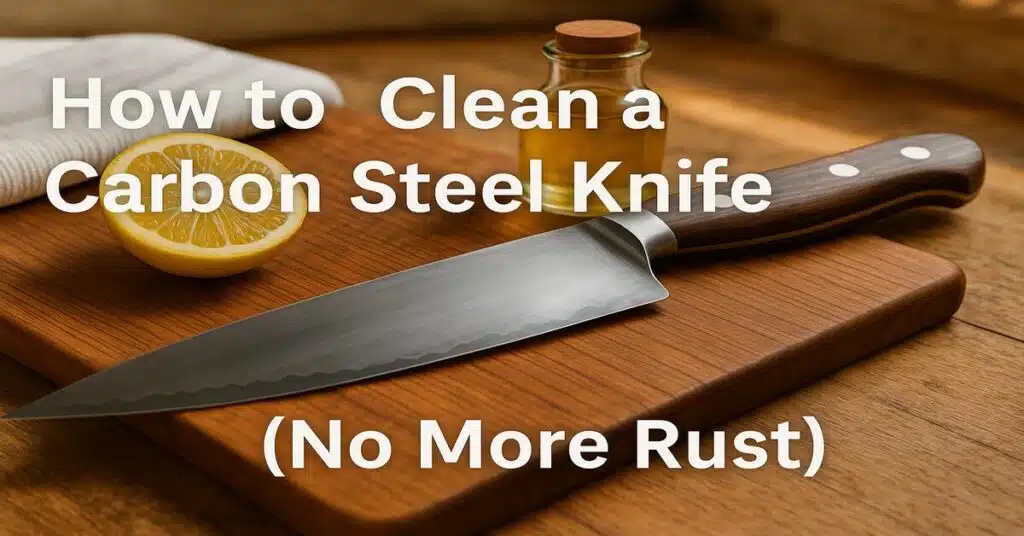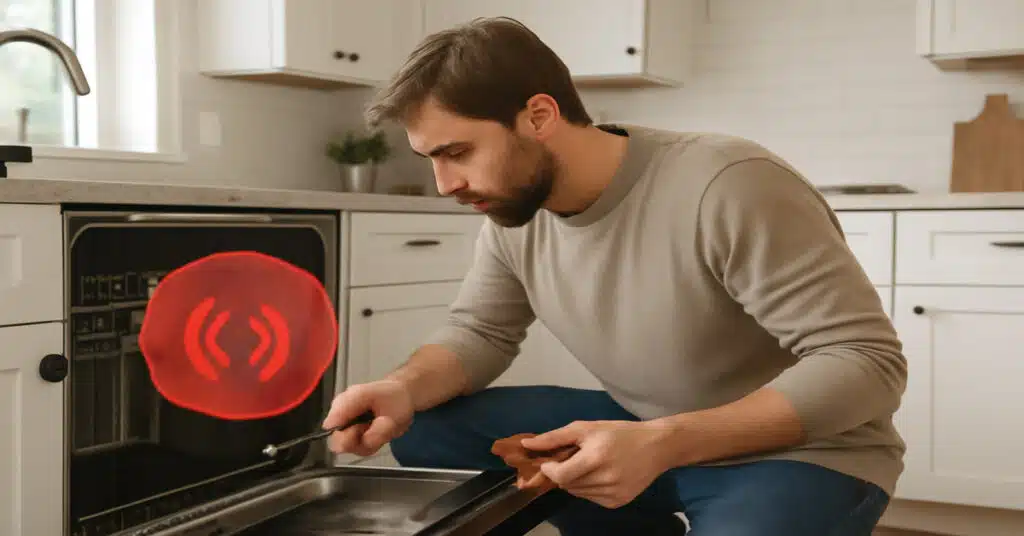I still remember the first time I really thought about What Is a Boning Knife Used For?
It was 2024, and I was standing in the meat section of my local grocery store in Pennsylvania. Chicken thighs were on sale — or so I thought — until I noticed the price difference between pre-trimmed boneless thighs and the bone-in version. The boneless ones were almost double the price.
That’s when it hit me: if I learned to debone meat myself, I could save a lot of money over time.
Fast forward to today, and my boning knife has become one of the most cost-saving and versatile tools in my kitchen. From trimming pork loins and breaking down whole chickens to prepping brisket and even filleting fish — it’s a workhorse.
In this guide, I’ll share exactly What Is a Boning Knife Used For?, the different types, tips for safe and efficient use, and why I believe every home cook in America should own one.
What Is a Boning Knife and What Makes It Special?
Quick Answer: A boning knife is a slim, sharp kitchen tool made to remove bones from meat, poultry, and fish. It helps you cut close to the bone, trim fat, and work around joints with ease — all while keeping more of the edible meat.
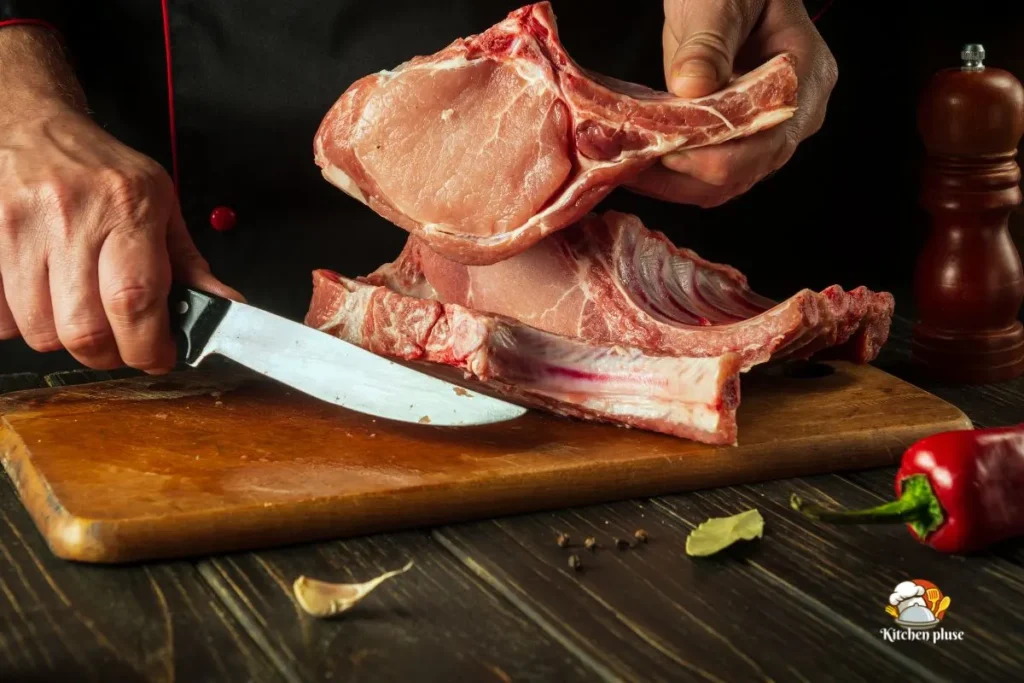
I learned this the day I broke down my first chicken thighs at home. The knife’s flexibility and control turned a messy job into clean, professional-looking cuts.
Definition & Core Purpose
A boning knife is:
- Thin and narrow for accurate cuts
- Pointed to reach near joints and tendons
- Flexible or semi-flexible to follow the shape of bones
- Designed to save more meat while removing bones
How It Differs From Other Knives
| Knife Type | Best For | Main Difference |
| Chef’s Knife | Chopping and slicing many foods | Thicker blade, less precise near bones |
| Fillet Knife | Skinning and filleting fish | More flexible, not great for tough meat |
| Utility Knife | Small slicing and prep work | Shorter blade, not as good around bones |
Why It’s Special in My Kitchen
For me, a boning knife is more than just a knife — it’s a money saver. With it, I can:
- Break down whole chickens instead of buying pre-cut packs
- Trim pork loins to make custom roasts
- Keep the bones for homemade stock
A Bit of Heritage & Craftsmanship
My grandfather’s butcher knives from the 1940s are still sharp today. They’re heavy, solid steel, and built to last. Chef Brandon shared a similar story, using his grandfather’s butcher shop knives in his work. This shows why one well-made boning knife can last for decades if cared for properly.
Pro Tip: If you cook meat often, a boning knife will quickly pay for itself — you’ll save money, get better cuts, and feel like a pro every time you use it.
Types of Boning Knives and When to Use Each
Not all boning knives are the same. Over the years, I’ve learned that the right type of blade can make your prep faster, safer, and cleaner. Here are the three main types, when to use them, and why they matter in my own kitchen.
1. Flexible Boning Knives
Best for: Poultry, fish filleting, and delicate trimming.
The flexible blade moves along bones and under silver skin with almost no waste. It’s perfect for tasks that need precision without damaging the meat.
Why I use it:
- Ideal for removing thin silver skin from pork tenderloin.
- Great for cleanly separating meat from poultry bones.
- The flexibility helps in tight, curved areas like chicken thighs or fish rib cages.
Safety Tip: Choose one with a bolster or heel grip — it helps prevent slips when your hands are wet or greasy.
2. Japanese Honesuki Boning Knife
Best for: Poultry, joint work, and light vegetable prep.
This Japanese-style knife has a taller blade that gives extra knuckle clearance, so I can chop herbs or slice vegetables without switching knives. The thicker spine provides more force, making it a solid choice for breaking down chicken joints or cutting through tougher meat.
Why I love it:
- Doubles as a prep knife — no need to swap tools mid-task.
- Strong enough to handle tough poultry joints without bending.
- Works well for precision cuts in tight spaces.
2. Curved Boning Knives
Best for: Brisket, pork loin, and large roasts.
The curved blade helps me navigate large cuts with ease. It glides under fat caps, works around awkward angles, and trims without tearing the meat.
My go-to for:
- Holiday roasts — trimming large briskets or pork loins.
- Removing hard fat from big cuts quickly.
- Keeping cuts uniform and clean for better presentation.
Quick Comparison Table
| Knife Type | Best For | Main Advantage |
| Flexible Boning Knife | Poultry, fish, delicate trimming | Flexibility for precision cuts |
| Japanese Honesuki | Poultry joints, light veggie prep | Strength + prep versatility |
| Curved Boning Knife | Brisket, pork loin, large roasts | Handles large cuts & awkward angles |
Pro Tip: If you cook different types of meat regularly, owning two different boning knives (one flexible, one curved or Honesuki) can save time and make your prep much easier.
Can a Utility Knife Be Used as a Boning Knife?
Quick Answer: Yes — in some cases, a utility knife can double as a boning knife, especially if it has a narrow, pointed blade. While it won’t replace a dedicated boning knife for heavy meat work, it can handle light trimming and deboning tasks just fine.
When a Utility Knife Works Well for Boning
From my own kitchen experience, there are times when I’ll grab my utility knife instead of my boning knife:
- Small Cuts of Meat — such as chicken wings or fish fillets.
- Quick Trimming — removing small bits of fat or sinew from steaks.
- On-the-Go Prep — if I’m cooking at a friend’s house and only have one knife handy.
Blade Size Guide:
- Home Cooks: 4.5–6 inches works best for control.
- Professional Butchers/Chefs: Up to 9 inches for larger meat tasks.
Why I Still Prefer a Boning Knife for Bigger Jobs
While my utility knife can handle small tasks, the boning knife’s shape and flexibility make it much more efficient for:
- Working close to the bone without tearing meat.
- Navigating joints and curved bone structures.
- Preserving more of the edible portion during trimming.
For example, when breaking down a whole chicken, my boning knife simply feels safer and more accurate — no need to force the blade or make multiple passes.
Pro Chef Tip for Safety & Hygiene
Chef Brandon shared a habit I now follow: use your utility knife for fruits and vegetables first, then switch to meat. This avoids cross-contamination and keeps your prep area cleaner.
If you need to use the same knife, wash and sanitize it thoroughly before switching between produce and raw meat.
Key Takeaway:
A utility knife can be a stand-in for light boning work, but if you regularly break down meat or work with whole cuts, a dedicated boning knife will save you time, effort, and waste.
Creative Uses for a Boning Knife in the Kitchen
A boning knife isn’t just for removing bones — it’s one of the most versatile prep tools you can own. With its slim, sharp blade, it handles everything from meat trimming to fruit prep, helping you save time, reduce clutter, and work more efficiently in the kitchen.
Everyday Tasks Beyond Meat
In my own kitchen, I reach for my boning knife far more often than I expected. Here’s how it earns its keep:
- Trimming Fat — Perfect for cleaning up steaks, pork chops, or roasts without wasting meat.
- Deboning Poultry — Makes quick work of chicken legs, thighs, and wings.
- Filleting Fish — Flexible enough for precise, clean cuts along the bones.
- Removing Seeds — Works great for tomatoes, cucumbers, or bell peppers.
- Fruit Prep — Ideal for peeling and slicing mangoes, pineapples, or melons without damaging the flesh.
Why I Use It for Multiple Tasks
For me, the biggest advantage is efficiency. By using one knife for several prep jobs:
- I save washing time — fewer knives to clean.
- My counter stays less cluttered.
- I can move from one ingredient to another without constantly changing tools.
For example, if I’m making salsa, I’ll trim chicken for the main dish, then use the same knife to remove seeds from tomatoes and dice peppers. It’s a smooth, fast workflow.
Pro Tip:
If you’re going to use the same knife for both meat and produce, wash and sanitize it in between. This keeps flavors fresh and prevents cross-contamination.
Key Takeaway:
A boning knife is more than a meat tool — it’s a multi-purpose kitchen essential. If you learn to use it creatively, it can replace several other knives and make your prep faster and cleaner.
How to Use a Boning Knife Like a Pro
Quick Answer: To get the most from your boning knife, keep the blade close to the bone, work with controlled movements, and always cut away from your body. A good grip, steady hand, and proper angles make every cut cleaner, safer, and more efficient.
Meat Preparation Tips
When I trim pork loin at home, I like making “his & hers” portions — thinner slices for me, thicker ones for my partner. The precision of a boning knife makes this simple.
- Start with a stable cutting board — non-slip mats help keep it steady.
- Work with the grain for even slices, but go against it when removing fat.
- For pork tenderloin, slide the tip just under the silver skin and lift gently to peel it away in one clean strip.
Chicken Leg & Thigh Breakdown
This is where a boning knife really shines — it lets you find and separate joints without hacking.
- Locate the joint by touch, not sight — gently wiggle the leg to feel where the bone ends.
- Slide the blade along the bone — keep it close to avoid wasting meat.
- For drumsticks, try “lollipopping”: cut around the base, push the meat down toward the other end, and serve for a fun party presentation.
Pro tip: A flexible boning knife works best here for navigating curves and tight spaces.
Maintaining Control & Safety
A sharp knife is safer than a dull one — but only if you handle it correctly.
- Grip firmly with your dominant hand, resting your index finger along the spine for guidance.
- Use gentle, controlled pulls — never force the blade through bone.
- Always cut away from your body and keep your other hand clear of the blade path.
- Keep the knife sharp — honing before each use keeps cuts clean and reduces slipping risk.
Key Takeaway:
Whether you’re trimming pork, breaking down chicken, or filleting fish, mastering your grip, angle, and blade control turns a boning knife from an ordinary kitchen tool into a pro-level game changer.
How to Choose the Best Boning Knife for Your Needs
Quick Answer: The best boning knife for you depends on what you cook most.
- Flexible blades are great for delicate trimming and fish.
- Japanese Honesuki knives handle chicken joints and mixed prep.
- Curved blades are best for large roasts.
Also, think about comfort, grip, and blade length—these can make a big difference.
Flexible vs. Stiff, Curved vs. Straight
From my own kitchen, I’ve learned there’s no single knife for every job. The right one depends on your main cooking tasks.
| Type | Best For | Pros | Cons |
| Flexible | Fish, poultry, delicate cuts | Follows bone curves, minimal waste | Not ideal for tough cuts |
| Honesuki (Japanese) | Chicken, mixed prep | Versatile, sturdy, also good for vegetables | Less flexible, heavier |
| Curved | Large roasts, brisket | Easy fat removal, comfortable for big cuts | Not as precise for small trimming |
Handle Grip Matters
Even the best blade won’t help if the handle feels wrong. A comfortable grip improves control and safety.
- Wood handles — warm, traditional feel; better for dry prep, needs more care.
- Synthetic handles — durable, dishwasher-safe, great when working with wet hands.
- Ergonomic grips — reduce strain during long prep sessions.
My tip: I use a synthetic ergonomic grip when breaking down several chickens—it’s secure and keeps my wrist from getting sore.
Blade Length Recommendations
Choose based on your cooking style and the cuts you prepare most:
- Home cooks: 5–6 inches — better control for poultry, fish, and smaller roasts.
- Butchers & BBQ lovers: 6–9 inches — more reach for brisket, pork shoulder, and big cuts.
Key Takeaway:
Your best boning knife is the one that fits your cooking habits, feels good in your hand, and stays sharp. If your budget allows, get two styles—for example, a flexible knife and a Honesuki—so you’re ready for any job.
Knife Maintenance and Longevity Tips
Quick Answer: To make your boning knife last for years, hand wash it, dry it immediately, store it safely, and sharpen it regularly. Dishwashers can dull or damage the blade, so skip them completely.
1. Cleaning Your Boning Knife
I always hand wash my boning knife right after use. This keeps food from drying on the blade and prevents rust.
- Avoid the dishwasher — high heat and harsh detergents can dull and chip the edge.
- Use warm water, mild dish soap, and a soft sponge.
- Rinse thoroughly to remove all soap residue.
My tip: If I’ve been working with raw meat, I sanitize the blade with a quick vinegar rinse before drying.
2. Drying to Prevent Rust
Even stainless steel can rust if left wet.
- Pat dry immediately with a soft kitchen towel.
- Pay special attention to the area where the blade meets the handle — water often hides there.
3. Safe Storage for Sharpness and Safety
A knife tossed in a drawer will dull quickly and can be dangerous to grab.
- Knife block — keeps the edge protected.
- Magnetic strip — saves counter space and makes knives easy to reach.
- Blade guard — perfect if you store knives in a drawer.
My tip: I use a magnetic strip for daily access, but keep my travel boning knife in a sheath when cooking at friends’ houses.
4. Sharpening and Honing
A sharp knife is safer and more enjoyable to use.
- Hone before each use — this realigns the edge for cleaner cuts.
- Sharpen every 2–3 months if you cook daily, or at least twice a year for occasional use.
- Use a whetstone, professional sharpener, or take it to a sharpening service.
Key Takeaway:
A boning knife can last decades if cared for properly. Wash by hand, dry right away, store it safely, and keep it sharp. Treat it well, and it will reward you with perfect cuts every time.
Final Verdict — My Take on the Boning Knife
From my own kitchen experience, a boning knife is far more than a meat-prep tool — it’s a versatile, cost-saving essential that can transform the way you cook. The right one will help you break down poultry, trim roasts, fillet fish, and even handle certain fruits and vegetables with precision.
Whether you go for a flexible blade for delicate trimming, a curved knife for large cuts, or a Japanese Honesuki for all-around performance, the key is finding one that fits your hand and cooking style.
Bottom line: Invest in a quality boning knife, treat it well, and it will serve you for decades — making every cut cleaner, faster, and more enjoyable.
Frequently Asked Questions About Boning Knives
What is a boning knife used for in the kitchen?
A boning knife is designed for removing bones from meat, poultry, and fish. It also works well for trimming fat, cleaning silver skin from cuts like pork tenderloin, and even prepping certain vegetables. In my kitchen, it’s a go-to for breaking down whole chickens and prepping brisket.
Can you use a boning knife to fillet fish?
Yes — especially if you have a flexible boning knife. It follows the curves of the fish bones and helps keep the fillets neat. For very delicate fish like trout or flounder, I sometimes switch to a fillet knife for extra precision.
Is a curved or straight boning knife better?
It depends on what you cook most:
- Curved blades are great for large roasts, brisket, and pork loin because they glide under fat caps and around big bones.
- Straight blades are more versatile for everyday home cooking and smaller cuts of meat.
Tip: Many chefs keep one of each for flexibility.
What is the best boning knife for beginners?
For most new home cooks, a 6-inch flexible or semi-stiff boning knife is ideal. It’s long enough for roasts but still easy to control for smaller tasks like poultry and fish.
How often should you sharpen a boning knife?
If you cook several times a week, sharpen every 2–3 months. Hone it briefly before each use to keep the edge aligned. This keeps cuts cleaner and safer.
About the Author
MD Soazim, founder of Kitchenpluse.com, shares real-life cooking tips and expert knife skills to help home cooks save time, money, and meat.

